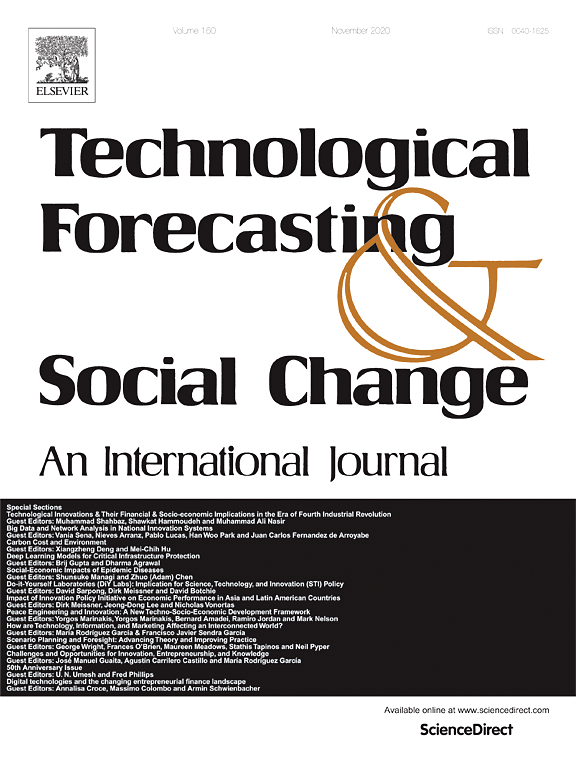Senior Lecturer in Business Administration, Karlstad University, Sweden
Associate Professor, University of Paris I Panthéon-Sorbonne, Paris, France
Associate Professor, EM Strasbourg Business School, University of Strasbourg, HuManiS UR 7308
Abstract
The purpose of this article is to describe the possible futures of French museums up to 2030. To do this we rely on a Delphi study that took place between late 2017 and early 2018 with 99 experts from the field. We propose three scenarios. The first aims to create museums centered around youth and to democratize culture. The second corresponds to the reaction of museums facing a decrease in public funding. The third is a breakdown scenario, where museums undergo evolutions. In this latter scenario, a direct participation of nearby stakeholders is observed, unlike the other two scenarios.

1. Introduction
In Europe, the tertiarization of the economy has led to a sharp increase in the size of certain sectors such as health, education, and culture (Peyrard-Moulard and Pauget, 2013). According to Shubik (1994), culture has received broad state and private support, which can be explained by various factors, ranging from the international prestige linked to the construction of large buildings such as museums, the desire to preserve and enhance heritage, and the possibility of educating through culture; or even its potential to generate value in economic terms (Falk and Sheppard, 2006; Regourd, 2012; Labadi, 2016). Picard (2018) notes that this sector represents 88 billion € in annual turnover, not including tourism benefits. A study by the French Ministry of Culture shows that France invests 2.6% of its GDP on average in culture compared to 2.3% across other countries,1 thus contributing to strengthening its influence. A report commissioned by the French Ministry of Culture in 2011 highlights that France is one of the world leaders in the sector (4th in the art market, 3rd in cinema, renowned monuments, and festivals of international reputation).
Museums are undeniably important in cultural terms – symbolically, objectively, and subjectively (Origet du Cluzeau, Tobelem, 2009; Berneman, Meyronin, 2010). The focus herein is on France, which is known for its actions in favor of the international influence of culture, and is clearly a key player in the museum system. Indeed, France is home to three of the ten most visited art museums in the world, the Louvre Museum being the most visited in the world, with about 10 million visitors per year (source: The Louvre Museum).
According to official data from the Ministry of Culture (2017), the number of visitors to museums in France rose from just over 40 million in 2005 to 62 million in 2017. However, attendance has stagnated since 2010 and is concentrated around museums whose attendance exceeds 100,000 visitors per year (which represent only a fraction among the 1,200 accredited French museums), and even more so towards the largest establishments (e.g., the Louvre Museum, Le château de Versailles, and le musée d’Orsay), whose attendance is mainly linked to international tourism. Smaller museums (which accommodate less than 20,000 visitors a year) are facing economic pressures with a decline in attendance for several consecutive years and the fact that public funding is stagnating or declining (Benhamou, 2012); not to mention the impact of the Covid-19 crisis.
At the same time, the commercial potential of museums is asserting itself with the opening of subsidiaries abroad for the largest museums such as the Louvre in Abu Dhabi and the Pompidou Center’s partnerships in Malaga, Spain and Brussels, Belgium (Tobelem, 2017b; Peyre, 2018). However, this does not compensate for the need for investment to renovate or expand existing museums.
The emergence of new technologies and new IT players such as Google (which offers virtual visits of more than 150 museums) and the introduction of robots in museums, providing security and/or information services, raises questions about the way these organizations are evolving.
Thus, the museum industry is affected by major upheavals of all kinds, which give rise to uncertainties leading to multiple possible futures (Jouvenel, 1964). In this context, we interviewed experts to determine how they imagine the future of museums in 2030. This time horizon was considered because it is far enough away to take into account disruptions – especially economic, technological, and societal – but close enough to allow experts to project themselves beyond the current period.
Studies carried out by professional museum organizations exist in the USA,2 the United Kingdom,3 the Netherlands,4 and Switzerland.5 However, very little has hitherto been said about France, apart from an official report dating from 2017, that tended to focus on existing developments rather than reflecting on the foreseeable future of French museums (Eidelman, 2017). Our contribution is therefore to offer a foresight study on this sector in France. In methodological terms, Delphi is operationalized to build a consensus based on expert opinions (Hsu and Stanford, 2017). This method is widely used in foresight contexts (Breiner et al., 1994). Specifically, we relied on a two-round Delphi study with 99 French-speaking experts. We interviewed experts from the major museums (e.g., the Louvre Museum, the Pompidou Center, the Musée d’Orsay, the Picasso Museum, and the château de Versailles) whilst also ensuring that smaller museums and establishments located outside Paris and the major provincial cities were duly accounted for in the sample of respondents. This led us to formulate three scenarios for 2030. The first is centered on youth and the democratization of culture. The second questions the economic future of museums. Finally, the third is a scenario of breakdown, where museums undergo evolutions in progress. In this latter scenario, it includes the direct participation of museums’ stakeholders, unlike the other two scenarios.
The remainder of the paper is structured as follows. A literature review is offered in Section 2, before methodological details are delineated in Section 3. The results of the Delphi exercise are then outlined and discussed in Section 4. Finally, conclusions are put forward in Section 5.
Lire la suite : https://www.sciencedirect.com/science/article/pii/S0040162520312105?dgcid=rss_sd_all
Laisser un commentaire